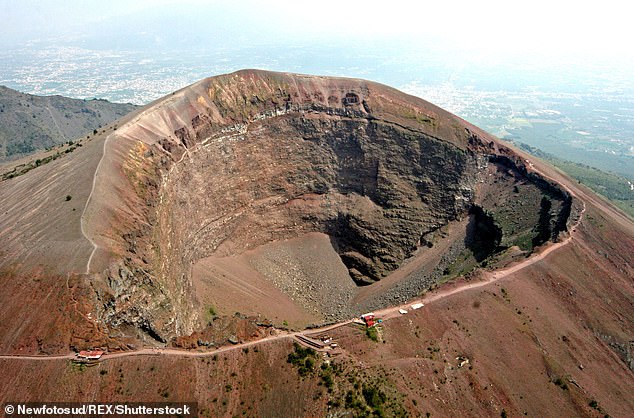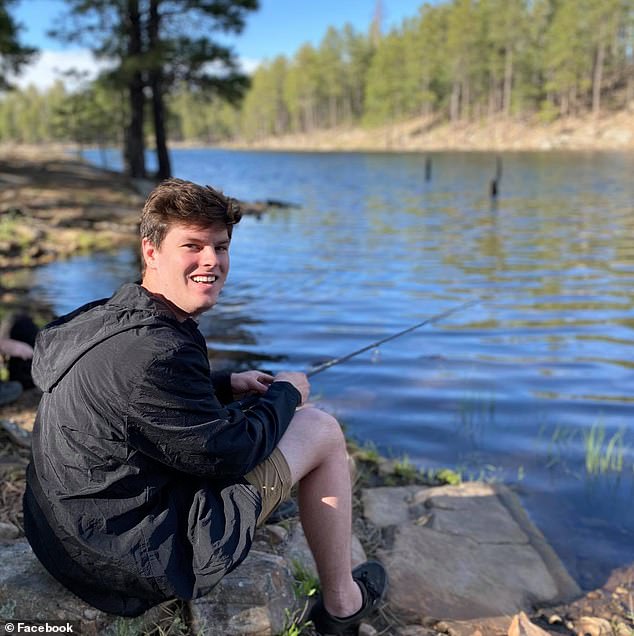Taking selfies is now a ‘public health problem’, say researchers after spate of deaths at beauty spots
Taking selfies should be considered a ‘public health problem’, according to new research.
Academics in Australia have been analyzing scientific articles and media reports on selfie-related injuries or deaths worldwide since 2008.
They found that nearly 400 reports had been made during the 13-year study period – including 77 in the US.
The victims were most likely female tourists in their early twenties, while falling and drowning while taking a photo were the two leading causes of death.
Researchers said the public must be made aware of the risks posed by selfies – of which an estimated 92 million are taken every day – and urged social media apps to install software to warn people of the dangers when they go to take a selfie.
Andrea Norton, 20, studied environmental sciences at Briar University and was a member of the school’s volleyball team and symphony choir. She fell to her death in 2019 while taking a selfie at a popular beauty spot in a national park in Arkansas

Sofia Cheung, an Instagram star, is seen above in her latest Instagram post. She died in 2021 after losing her balance and slipping at a waterfall

A 23-year-old American tourist fell into Mount Vesuvius, Italy, while taking a selfie and dropping his cell phone into the volcano in 2022
Dr. Samuel Cornell, a risk expert at the University of New South Wales, Australia, and others wrote in the paper: ‘The phenomenon of selfie-related incidents should be viewed as a public health problem that requires a public health response.
‘Until now, little attention has been paid to preventing selfie-related incidents through behavior change methodologies or direct messages to users via apps.
‘Although previous research has recommended ‘no selfie zones’, barriers and signage as ways to prevent selfie incidents, our results suggest this may not be enough.
“It may be wise to also send direct safety messages to social media users.”
Twenty years old student Andrea Norton plunged 100 feet to her death from a cliff in Arkansas after slipping while taking a selfie in 2019.
She was at Hawksbill Crag in the Ozark National Forest, a popular photo-taking spot among hikers.
In her obituary, her family said: “Andrea developed a genuine love for the planet and dedicated herself to making a major impact on its conservation. She has never lost her impetuous approach to achieving her goals.”
In January 2022, a 21-year-old hiker also fell to his death after slipping while taking a selfie at the top of a mountain in Arizona.
Richard Jacobson’s body was found on a trail about 700 feet from where he fell.
Another victim is Instagram star Sofia Cheung, who plunged to her death in 2021 after losing her balance while taking a selfie at a waterfall in Hong Kong.
The 32-year-old, who had 35,000 followers on Instagram, fell into the falls’ plunge pool. She was rushed to hospital but was later pronounced dead.

Richard Jacobson, 21, fell to his death from a mountaintop last year. His friend told Dailymail.com that Jacobson “got along with everyone” and “treated everyone with respect”
There have also been a number of near misses.
Earlier this year, a 42-year-old cruise passenger in Florida was said to be lucky to be alive after she fell ten stories from a ship’s railing while posing for a selfie.
And in July last year, a 23-year-old American tourist survived after falling into the crater of an active volcano in Italy while trying to take photos for social media.
Authorities in some countries have previously had to issue warnings about selfies, including in Britain, where coastguards earlier this year warned people not to take selfies with storm waves after a woman was photographed being swept off her feet as she posed in front of a storm surge .
For the article, researchers looked for studies in which the terms “selfie” and “death, fall, injury, fatality, drowning or accident” were published in the US or Australia.
They also searched online for news articles about selfie deaths or injuries in both countries from 2011.
Their search revealed five scientific studies and twelve news articles that were included in their analysis.
Reports from each of them were then compiled to determine the top causes of death from selfies.
Data from the newspapers also showed that the number of injuries or deaths from selfies had increased over time, by three fatalities reported in 2013, compared to 68 in 2019.
Then in 2020 there was a brief lull – due to the Covid pandemic – with 37 deaths before numbers rose again, with 31 deaths reported in the first half of 2021.
The average age of the victims was 22 years old, the researchers found.
Geographically, the study suggested that India was the country with the most reported deaths and injuries from selfies (100 deaths), followed by the US (39 cases) and Russia (33 cases).
